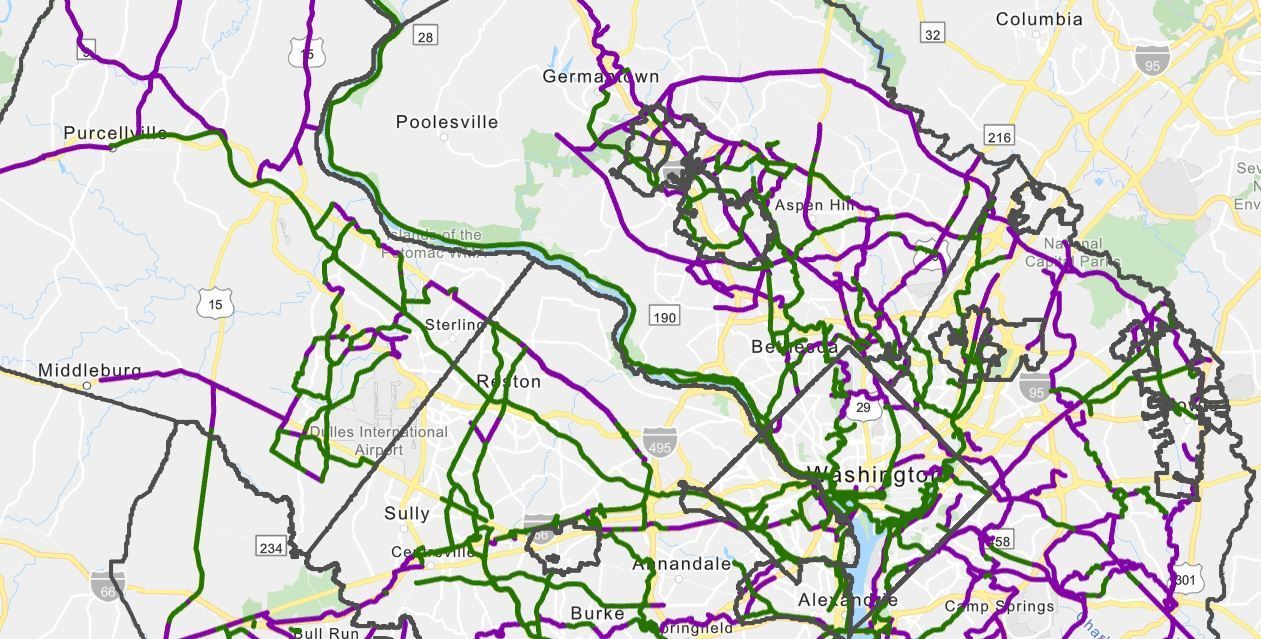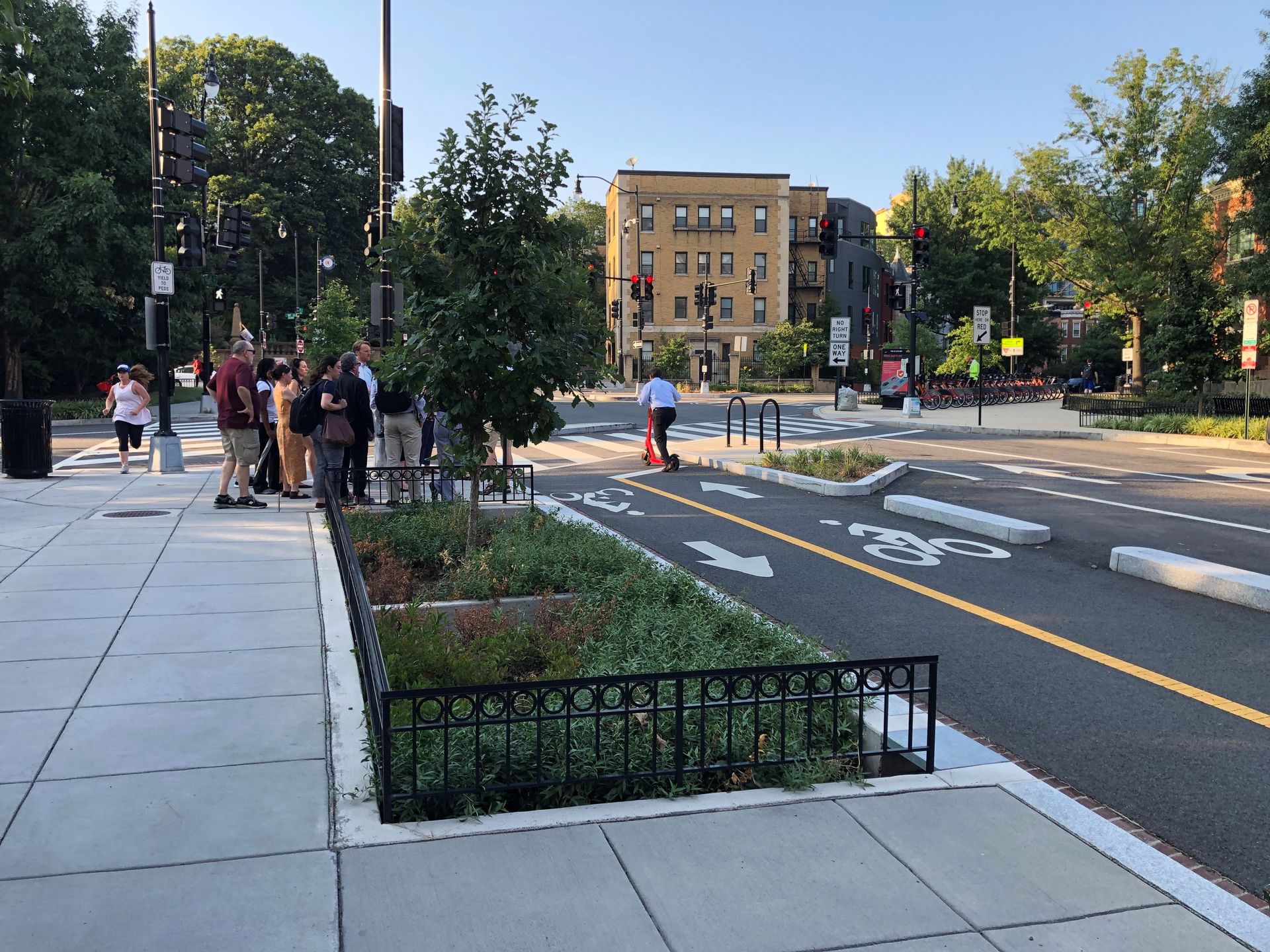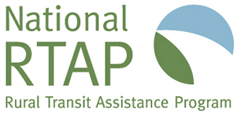State RTAP Best Practices
STATE RTAP
- American Samoa
- Guam
- Northern Mariana Islands
- Puerto Rico
- U.S. Virgin Islands
- Ninilchik Village Tribe BUMPS
- Pyramid Lake Paiute Tribal Transit
This document was prepared by National RTAP with the financial assistance of the U.S. Department of Transportation. The contents do not necessarily represent the opinions or policy of any agency of the U.S. Government, and the U.S. Government assumes no liability for the contents or use thereof. It does not have the force and effect of law and is not meant to bind the public in any way.

National Capital Trail Network
The greater Washington, DC region is renowned for the quality and extent of its shared-use paths and several notable long-distance bicycle routes that pass through the region. Michael J. Farrell, Senior Transportation Planner for the Metropolitan Washington Council of Governments (MWCOG) in Washington, DC, spearheads a unique shared-use path project that spans across Washington, DC, Maryland, and Virginia.
National Capital Trail Network

National Capital Trail Network
The greater Washington, DC region is renowned for the quality and extent of its shared-use paths and several notable long-distance bicycle routes that pass through the region. Michael J. Farrell, Senior Transportation Planner for the Metropolitan Washington Council of Governments (MWCOG) in Washington, DC, spearheads a unique shared-use path project that spans across Washington, DC, Maryland, and Virginia. The groundwork for the Bicycle and Pedestrian Plan for the National Capital Region began about twenty years ago through the work of the National Capital Region Transportation Planning Board (TPB).
The groundwork for the Bicycle and Pedestrian Plan for the National Capital Region began about twenty years ago through the work of the National Capital Region Transportation Planning Board (TPB). The Bicycle and Pedestrian Subcommittee of the TPB Technical Committee advises the TPB and its Technical Committee and other committees on bicycle and pedestrian considerations in overall regional transportation planning. It meets six times per year and each agency involved sends their bicycle and pedestrian planners. While the TPB is collaborative, the project works so well because the various agencies involved have different needs and roles and can customize their plans based on those; for example, setting speed limits for their area’s shared-use paths. Each jurisdiction has different challenges, and each can plan at its own speed.

Met Branch
TPB members include large agencies like the National Park Service (NPS) and the Washington Metropolitan Area Transit Authority (WMATA), as well as small, rural transit agencies in the region. The TPB convenes an annual shared micromobility workshop for all its members and administers working groups where agency representatives report on their progress and share best practices. TPB also provides technical assistance to its agencies and provides grant funding. If agencies want funding, they must produce and report on projects such as shared-use paths or long-distance trails. Since the TPB started planning, the region has built a network of approximately 800 miles of shared-use paths consisting of paved or packed crushed stone surface that are suitable for pedestrians, road bikes, e-bikes, and e-scooters. Walking and bicycling account for 11% of all trips in the region. 92% of bike/walk commuters reported being satisfied with their commutes, the highest of any commuter mode, according to a recent survey.
TPB members include large agencies like the National Park Service (NPS) and the Washington Metropolitan Area Transit Authority (WMATA), as well as small, rural transit agencies in the region. The TPB convenes an annual shared micromobility workshop for all its members and administers working groups where agency representatives report on their progress and share best practices.

Met Branch
TPB also provides technical assistance to its agencies and provides grant funding. If agencies want funding, they must produce and report on projects such as shared-use paths or long-distance trails. Since the TPB started planning, the region has built a network of approximately 800 miles of shared-use paths consisting of paved or packed crushed stone surface that are suitable for pedestrians, road bikes, e-bikes, and e-scooters. Walking and bicycling account for 11% of all trips in the region. 92% of bike/walk commuters reported being satisfied with their commutes, the highest of any commuter mode, according to a recent survey. The regional bike sharing program, Capital Bikeshare, includes about 5,000 bicycles at over 600 stations in seven jurisdictions. The project hopes to have over 1,700 miles of shared-use paths by the year 2045.

National RTAP offers one-stop shopping for rural and tribal transit technical assistance products and services. Call, email, or chat with us and if we can’t help with your request, we’ll connect you with someone who can!
" National RTAP offers one-stop shopping for rural and tribal transit technical assistance products and services. Call, email, or chat with us and if we can’t help with your request, we’ll connect you with someone who can! "
Robin Phillips, Executive Director
" You go above and beyond and I wanted to let you know that I appreciate it so much and always enjoy my time with you. The presentations give me so much to bring back to my agency and my subrecipients. "
Amy Rast, Public Transit Coordinator Vermont Agency of Transportation (VTrans)
" I always used the CASE (Copy And Steal Everything) method to develop training materials until I discovered RTAP. They give it to you for free. Use it! "
John Filippone, former National RTAP Review Board Chair
" National RTAP provides an essential service to rural and small transit agencies. The products are provided at no cost and help agencies maximize their resources and ensure that their employees are trained in all aspects of passenger service. "
Dan Harrigan, Former National RTAP Review Board Chair
" We were able to deploy online trip planning for Glasgow Transit in less than
90 days using GTFS Builder. Trip planning information displays in a riders'
native language, which supports gencies in travel training and meeting Title VI
mandates. "
Tyler Graham, Regional Transportation Planner Barren River Area Development District
Slide title
" Having a tool like GTFS Builder is really light years ahead of what it used to be at one time in terms of how fast you can put everything together. Our university students really can't imagine transit without it, so I think it's very important for us in terms of attracting that particular demographic. "
Michael Lachman, Transportation Services Manager HAPCAP - Athens Transit
Slide title
" In the past we used proprietary database software that was very challenging, very murky, and hard to update. GTFS Builder is a great opportunity to make this more user-friendly, more readily updatable and it
would enable us to show how to create a GTFS to more of the staff. "
Jaime McKay, Former Manager of Direct Services Center for Mobility Equity
Slide title
" Collaboration is a buzz word these days in the industry. On behalf of our Tribal segment, I appreciate RTAP for making Tribes a partner in industry opportunities. The organization goes over and beyond reaching partners one would not expect in a busy industry such as public transportation. Thank you for your tireless efforts! "
Franklin Akoneto, Comanche Nation
Slide title
"We are so very thankful for all your transportation training materials. Your resources are as valuable as gold!"
Holly Walton, Transportation Assistant Manager, Curative Connections
A program of the Federal Transit Administration administered by the Neponset Valley TMA
National RTAP is committed to making this website accessible to persons with disabilities. If you need assistance accessing any content on our website or need alternative formats for our materials, please contact us at info@nationalrtap.org or 781-404-5020.
by National RTAP |

